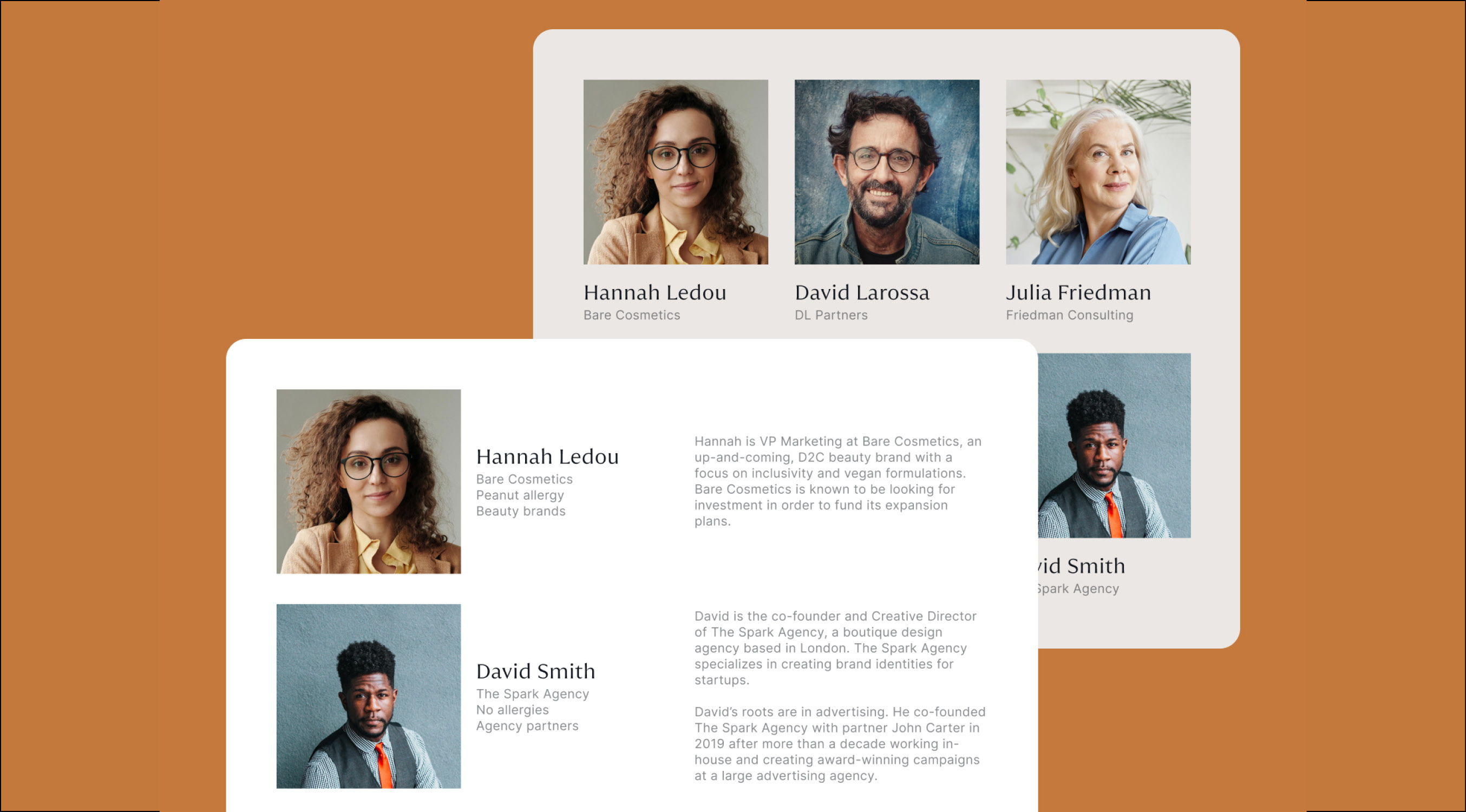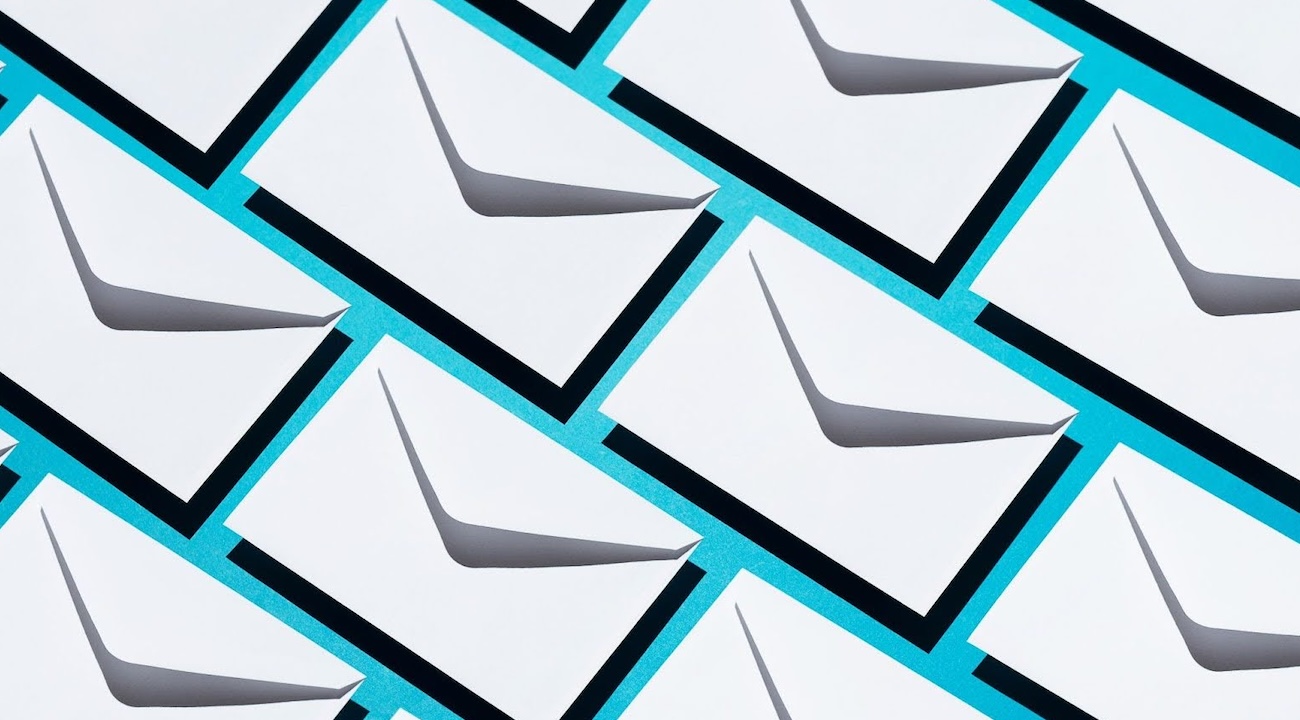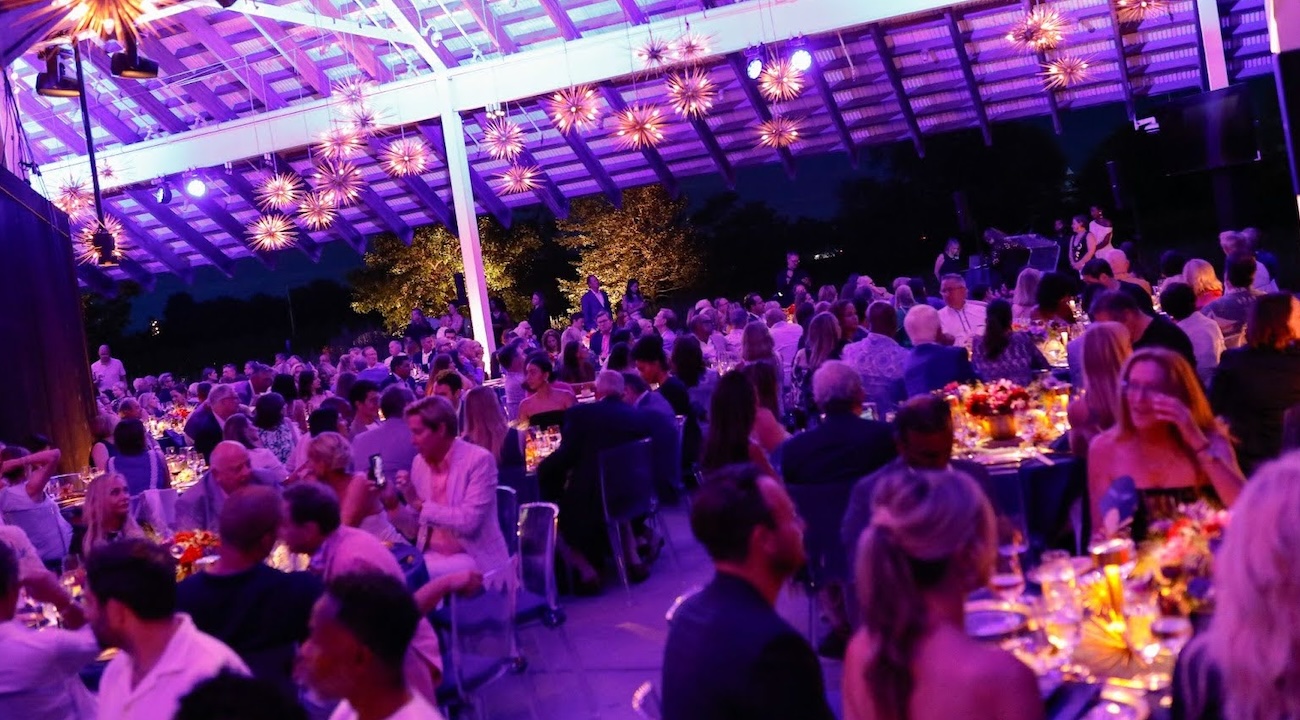Every guest who walks into your event carries different expectations.
Some are there to network, others are there to be inspired, and a few simply want to enjoy some time away from their daily routine.
Your job as an event organizer? Make each of them feel like the event was designed just for them.
Fortunately, the information you need to create personal experiences is already within your reach. Here are six expert strategies you can use to transform basic guest data into meaningful connections and an unforgettable event experience.
1. Collect guest data from the beginning
Don’t wait until your guests have arrived to start personalization. You’ll be too late to make the best impression.
As an event host or planner, you’re juggling complex responsibilities under pressure: managing budgets, hitting KPIs, and keeping your stakeholders happy. It’s easy to get caught up in the logistics and lose sight of the guests.
Start planning long before the big day. No matter what type of event you’re organizing, the RSVP or registration process is your first chance to get a sense of the people who will attend. The more useful information you gather upfront, the more you can personalize every aspect of the guest journey moving forward — which will save you time and effort on future events.
To make an event feel more tailored than generic, ask the right questions during registration.
Start at registration
Design RSVP forms, pre-event surveys, or event registration pages that go beyond the basics of “name and email.” Your goal is to understand the guest’s expectations in advance so you don’t disappoint. This is even more critical for VIP guests.
Remember to ask questions that will help you tailor the guest experience. These questions should be based on your specific event. For example, if you’re organizing a fashion event where you intend to gift garments to guests, get their sizing information in advance.
Depending on your event type and who’s attending, the following questions can help you plan the perfect personalized event:
- Food preferences. For safety and guest comfort, always ask about dietary restrictions and food allergies. Confirm their drink of choice, such as coffee or tea, wine or champagne, or non-alcoholic options.
- Seating preferences. Do they like to be seated front and center or tucked away in the back? Do they have any friends they would like to be seated near?
- Accessibility needs. This question is crucial, since failure to meet any of your guests’ accessibility needs could make them feel overlooked while undermining their experience.
- Topics of interest. When planning a corporate event, to truly foster attendee engagement, it would be wise to include questions about their interests or topic preferences for conferences and workshops.
It’s important to get as much useful information as you can, but don’t overwhelm your guests with long forms. When you’re deep into planning every aspect of the event, it can be hard to see the forest for the trees. Sometimes outsiders, like your guests, can have great ideas that will enhance your event. That’s why asking them even one open-ended question — such as “What’s one thing that would make the event super special?” — can be enough to give you what you need.
The key is to strike a balance. Only ask for details that you can realistically use to create a memorable event experience that leaves a lasting impression. Providing a personalized guest journey and event experience based on the information your guests provided will make them feel like the event was created specially for them. It also shows them that you, the event host, really listened.
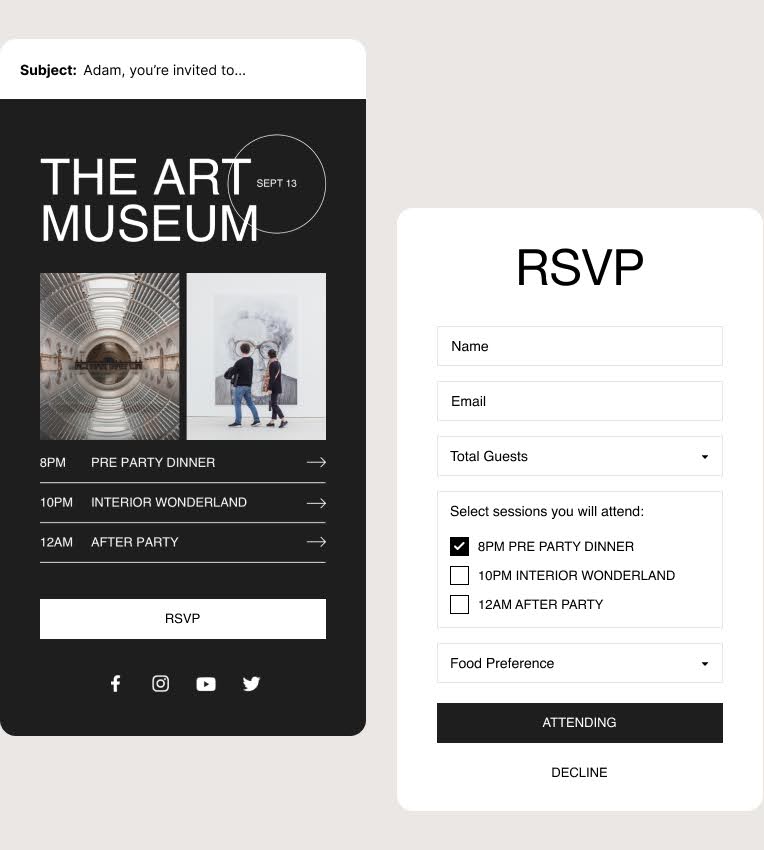
Use zkipster’s RSVP forms
With customizable RSVP forms from zkipster Events, you can gather responses in a branded, mobile-friendly format, ensuring the guest journey feels personal from the first click.
The zkipster event and guest management platform instantly organizes responses and guest details into actionable insights that make event planning a breeze. Save any notes and custom guest fields you gather to create more filters and segments in Audience, adding value for future events.
By the time your guests arrive, you’ll be ready to make them feel appreciated in person.
2. Target guests to improve their event experience
For a truly successful event, your audience engagement can’t be at 50%.
To ensure a top-notch attendee experience, use segmentation to learn more about who your guests are and what they want – then curate aspects of your event based on their interests.
Why you should segment your guests
If you treat every guest like they’re the same person, you’ll miss out on opportunities to surprise and delight them as individuals. By segmenting guests into smaller, more intentional groups, you can design experiences that feel relevant and welcoming to each of them
For example, you can offer different experiences to different segments, such as fast-track for VIPs, champagne welcome receptions for adults, interactive welcome experiences with entertainment, and earlier timings for families.
How to segment guests
Segmentation doesn't need to be complicated, but it does need to be intentional. Even if it’s as simple as grouping guests into a few smaller subgroups that you can target with more curated content.
Here are some of the most effective ways to organize your attendees.
- Professional background: Group guests by profession, industry, or role/seniority to encourage natural networking and seat people with shared goals or complementary skill sets together.
- Relationship to host: Create distinct experiences for VIP clients, press, first-time attendees, sponsors, and high-profile guest teams (like assistants or caddies) based on their connection to your event.
- Interests and preferences: Segment by personal interests to offer tailored experiences like private wine tastings for enthusiasts, personalized welcome gifts, or curated activity recommendations.
- Investment or engagement level: Recognize guests who have invested more deeply by giving high-spending customers exclusive previews, luxury package holders private lounge access, or major donors special cultivation experiences.
- Event-specific needs: Model segmentation based on your event type, such as using moves management for fundraising galas, topic preferences for multi-track conferences, or purchase history for retail events.
- Family status and plus-ones: Factor in the size of the family party and, if relevant, the ages of their children in attendance.
the zkipster advantage
With zkipster Audience, segmentation is effortless. You can use smart filters to instantly create dynamic segments and guest lists with tailored communications, seating, and on-site touches for each one.
Instead of manually tracking who belongs where, you can trust Audience to organize the details while you focus on optimizing the event content to reflect them. You can also pull data in and out of zkipster Events and your CRM for continuous, automated data enrichment.
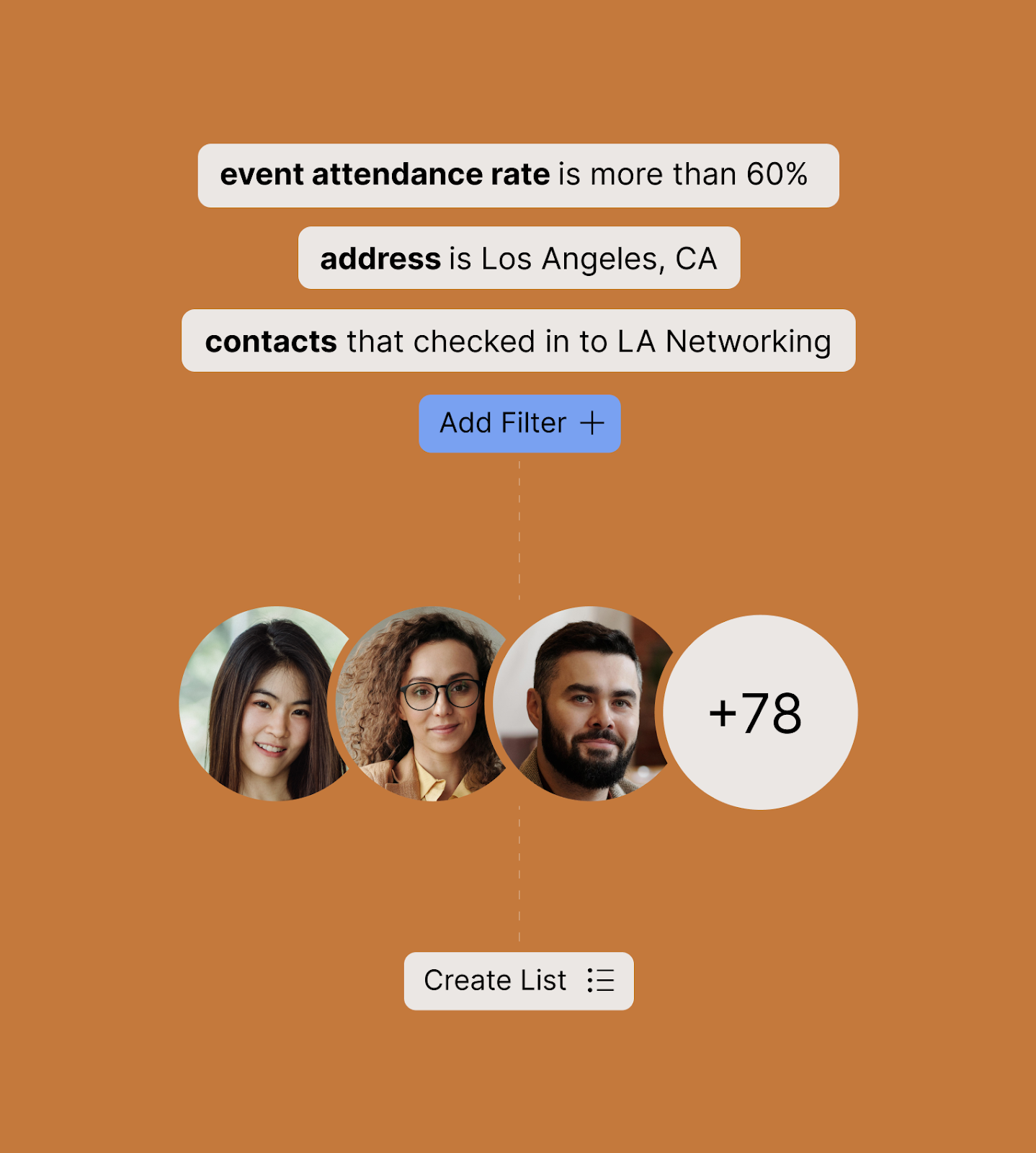
3. Personalize your messaging
In the events industry, every email, text, and invitation sets the tone for what’s to come. Personalizing the messages you send your guests will help you build anticipation before your next event. It also makes your guests feel special while significantly improving your chances of meeting your event goals.
Invitations
Address guests by name and include small touches based on the information you gleaned during registration or past attendance. For example, add a little note like, “We’re saving your favorite pinot noir for the reception.”
Reminders
Instead of generic updates or event marketing, event reminders or confirmations can also be tailored to your guests.
Event countdowns with content that speaks to the guest’s interests, photos of event design they would appreciate, or messages like, “Your front-row seat for the keynote is confirmed,” all show you’re reaching out to them individually.
Anticipation building
Take personalization a step further by sharing sneak peeks of unique experiences they can expect at the event, such as menu previews, live music schedules, or glimpses of the event venue. This sparks excitement and helps your guests imagine themselves at the event before it begins.
Consider your tone of voice, too. If your event has a playful or specific theme, include related language or humorous puns to match the event’s personality. Thoughtful content is more likely to engage guests and build excitement about the event, and often earns great feedback from guests.
zkipster’s personalization tools
zkipster simplifies this process by merging guest data fields into each message for polished, consistent communications. That means no manual editing, no risk of errors, and by the time guests arrive, they already feel connected to the event.
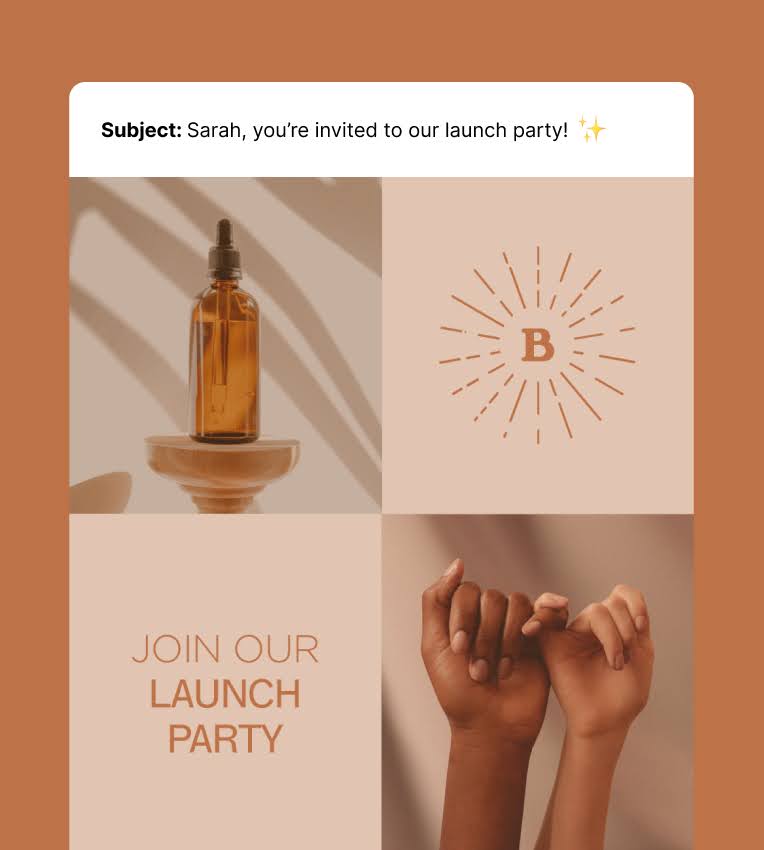
4. Make the event experience unforgettable
It’s no secret that the smallest detail can make the biggest difference. A positive first impression, immersive event experience, and other thoughtful touches can turn an ordinary event into an extraordinary occasion. Here’s how.
First impressions
Before the event, work out exactly what information your check-in staff need at their fingertips to make the check-in moment a success. Important notes? Dietary requirements? Accessibility needs that require escorting guests to specific locations? Make sure this information is gathered during the RSVP stage.
Then, greet guests by name at check-in and, if appropriate, mention something personal. Greetings could include something like:
- “Your meet-and-greet with the keynote speaker is scheduled for after the session.”
- “I saw you recently returned from Italy — how was the trip?”
- “Happy belated birthday! I hope you had a wonderful celebration last week.”
- (For plus-ones and other guests in their party/at their table) “Your guest x has already arrived and is at the bar”
With zkipster, relevant information about each guest can be captured in the guest list using both default and custom response fields. You can arrange guest fields on the zkipster app to display the information you need for personalized, seamless check-in for every guest.
Personalized event production
Personalization also extends to immersive experiences. Gamification (such as scavenger hunts or escape rooms) tailored to guest interests can add an element of fun to specific types of events.
Virtual or augmented reality can be used to highlight stories or products that are meaningful to various guest segments — think mapping projections within the venue to illustrate a presentation or simply provide a “wow” factor.
You can even use personalization to achieve your event goals. For example, problem-solving activities are a great way to encourage team bonding at corporate events.
Other thoughtful touches
Beyond introductions and virtual experiences, consider small touches that pack a big punch. Welcoming guests by serving them their favorite drink or having staff prepared to guide them to their preferred seating area will immediately show that you care. Even personalized audiovisual touches, like digital screens to welcome their arrival, can enhance their sense of belonging.
zkipster’s role
Here’s how the zkipster check-in event app can help you personalize the event experience for guests:
- Instantly see guest profiles, allowing staff to act on individual preferences in real time.
- Organize the guest list view in the app to show the fields you want your staff to focus on.
- Check in plus-ones with the app, with the option to still give them the personalized, white glove experience.
- Grant appropriate access to relevant staff. For example, they can view all the necessary info for check-in, but not make any edits.
- For events that include different sessions, you can also check guests into those simultaneously as they check into the main event.
- The zkipster app also has the ability to send check-in messages to both staff and guests. You can send zkipster check-in messages to notify your team that VIPs are here, for example, or send guests welcome messages with their table number or other important info.
Instead of staff fumbling through notes or relying on memory, they have all the information they need to greet attendees with confidence.
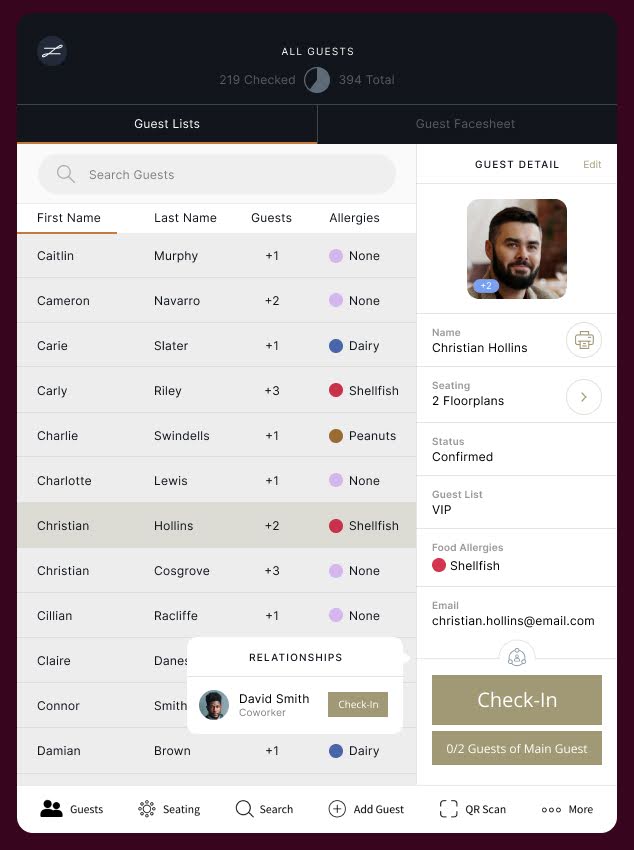
5. Monitor real-time data during the event
Once the doors of your event open, personalization still matters. Real-time data allows you to find opportunities or adjust your event to meet the guests where they are.
Stay flexible
Use live attendance data to adjust the event on the fly, like our client Team Event, a leading Australian event production agency. By using the zkipster app for check-in, the agency has a real-time number of checked-in guests so they always know when an event has reached a quorum and can start proceedings.
Spot patterns
Real-time data can also help you identify when specific guest segments are arriving so you can greet them personally or direct them to relevant activities. You can also view seating charts in the app, as well as see which guests from a table have already checked in so you can let new arrivals know.
Monitor engagement and balance session attendance
Event planners often rely on traditional methods like radios to communicate and redirect guests based on what staff observe on the ground. But you can take this a step further by using data to make informed decisions in real time.
With zkipster Sessions, you can track check-in data for different sessions throughout your event via the app. If you notice a session is over subscribed while another is under attended, you can proactively shuffle guests between sessions to balance participation rates. This keeps every session running at optimal capacity and prevents guests from being turned away from popular experiences while other areas sit empty.
the zkipster advantage
Real-time syncing through zkipster’s app means your entire team sees the same up-to-the-minute guest activity. Staff can identify no-shows, adjust seating plans, or redirect guests to an emptier room.
They can also respond to low food or drink preferences before guests even notice. There shouldn’t be any issues with food preferences, as you will have gathered this info in advance during the RSVP process detailed above, and passed it on to the caterer.
6. Stay in touch once the event is over
Once the guests have left, now is the time to follow up. Communication after the event shows that your guests weren’t just a name on a list, but an integral part of your event.
Personal thank-yous
Sending thank-you notes is a good start, but they shouldn’t be generic. Reference specific moments or interactions in your note. Send curated photo galleries, session recordings, or offer early access to your next event for loyal attendees. For VIP guests, handwritten notes from the host can be the ultimate personal touch.
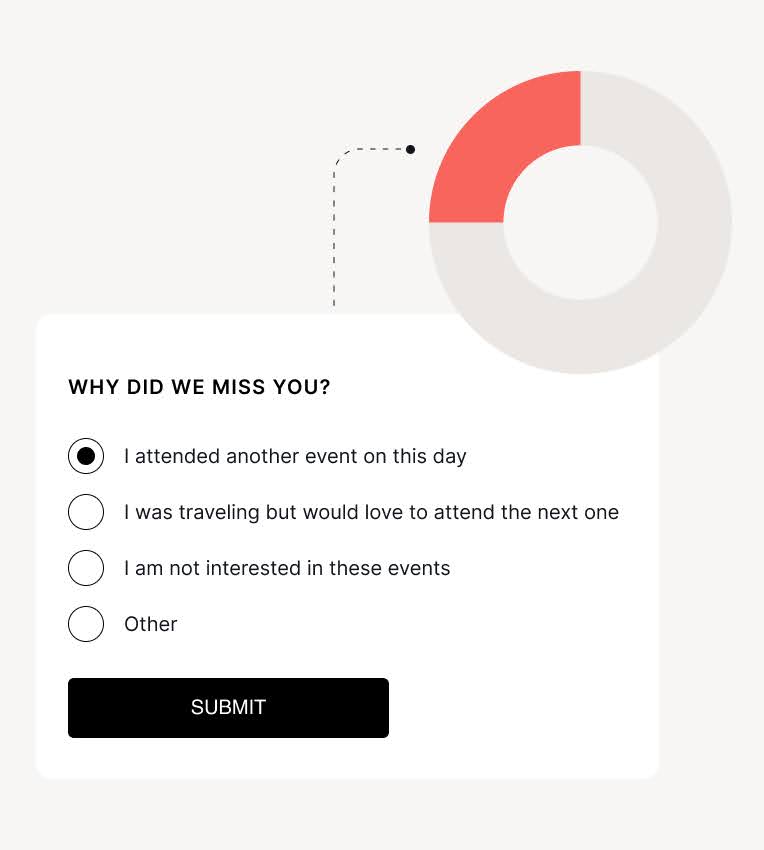
Post-event surveys
It’s wise to send a post-event survey to capture critical feedback from your guests. This is a natural opportunity to ask for feedback because the timing feels thoughtful, rather than transactional.
Guests who participated in certain sessions could receive a short survey focused on that particular experience.
Use event engagement and attendance data to invite guests to future events that match their interests. When guests feel like their voices are heard, they are far more likely to return to your next event.
zkipster’s reporting tools
zkipster makes it simple to act on this data by tying RSVP information, guest behavior, and check-in details directly into post-event workflows. With everything in one place, it’s easy to deliver follow-ups that feel as carefully curated as the event itself.
This information is also useful for things like identifying peak check-in times. If you know lots of guests will likely check in during a particular period, you can ensure the entrance is adequately staffed at peak check-in times to welcome each guest.
Create smarter events year after year
Beyond individual events, zkipster Audience is the perfect solution for delivering truly tailored experiences over time. It allows you to leverage and curate the guest information you have right now, then build on it for the future.
The beauty of Audience is that it’s a constant work in progress, not static. For future events, you won’t need to ask the same questions at RSVP because that information is already captured, and you can easily build guest lists in an intuitive way.
zkipster aims to help you make your events better year after year, in a simple and intuitive way. The more you use Audience, the more personalized each guest experience becomes.
The difference between a generic event and an unforgettable event comes down to the personalization efforts of event planners. Thoughtful details let guests know they matter.
The beauty is that personalization isn’t difficult when you have the right tools. If you want your events to be the ones that guests will talk about, return to, and cherish long after the final curtain call, check out what zkipster has to offer.
